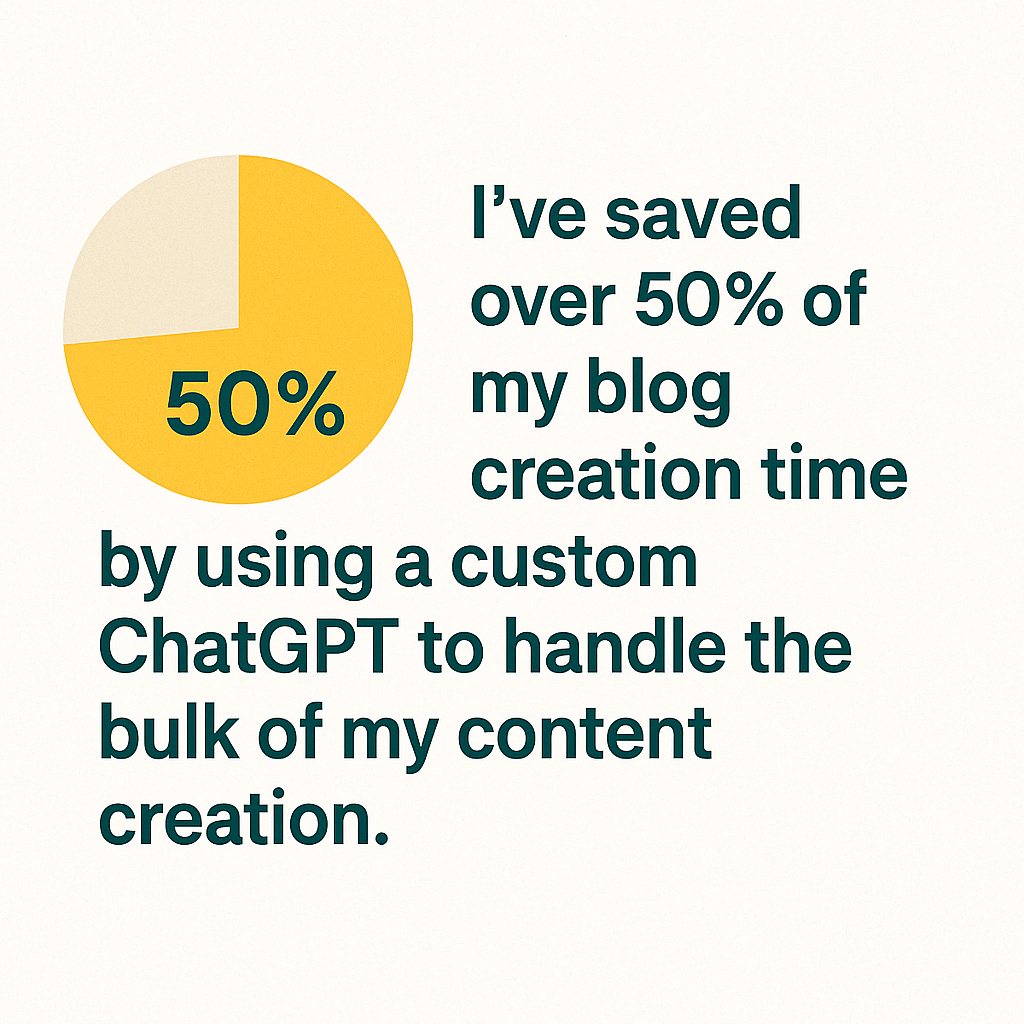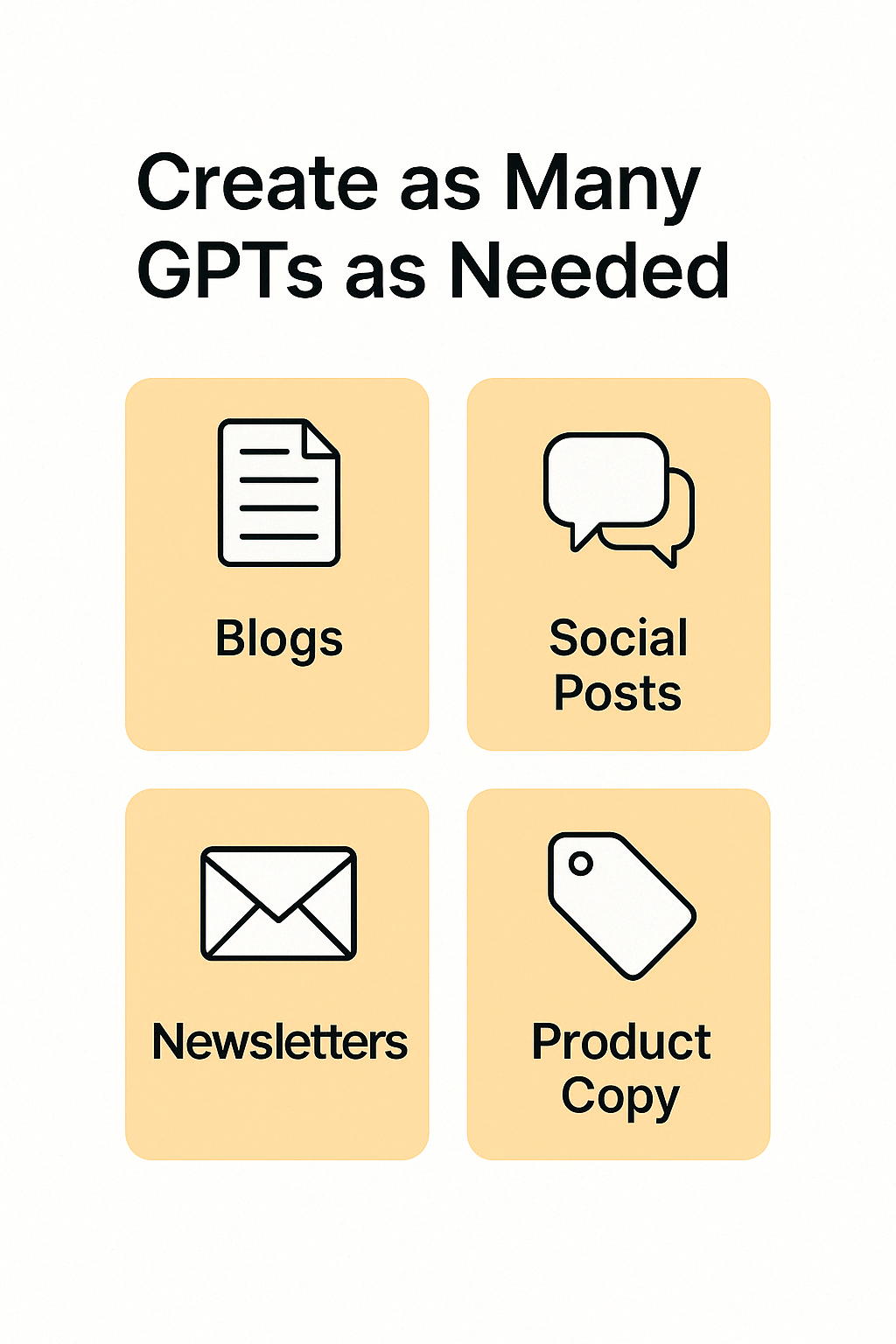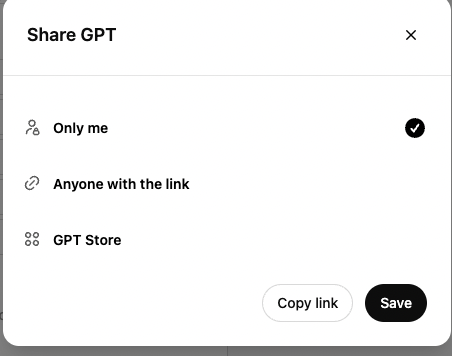How to Build Your Own Custom ChatGPT (No Coding Required)
If you're a content creator or digital marketer, you know how time-consuming it can be to research, draft, and optimise SEO blogs.
But what if there was a way to speed up this process significantly?
Enter custom ChatGPT.
These tailored versions of ChatGPT allow you to create AI assistants that can generate SEO-optimised content, saving you hours each week.
Best of all? You don’t need to know a single line of code to get started.
In this guide, I’ll walk you through how to create your own custom ChatGPT and show you how it can streamline your SEO blog creation process.
Whether you're a seasoned marketer or just getting started, this tool can make a huge difference in your productivity.
Key Takeaways
A custom ChatGPT can automate and streamline your SEO content creation process.
Save significant time by generating SEO-optimised drafts, keyword-rich headings, and meta descriptions.
Anyone with a ChatGPT Plus or Enterprise account can create a custom GPT for free.
1. Why Build a Custom ChatGPT for SEO Content Creation?
Custom ChatGPTs are perfect for automating tasks like SEO blog creation. Here’s why they make a great tool for content creators:
Automated SEO Blog Drafting
Instead of starting from scratch every time, your custom ChatGPT can generate SEO-optimised blog drafts. By uploading your preferred SEO resources like keyword lists, content guidelines, or past top-performing posts. Your custom ChatGPT can learn your SEO preferences and automatically generate blogs that align with SEO best practices.
Time-Saving and Efficiency
I’ve saved over 50% of my blog creation time by using a custom ChatGPT to handle the bulk of my content creation.
What once took hours of researching keywords, structuring blog posts, and fine-tuning meta descriptions now takes just minutes. With a well-trained custom ChatGPT, it creates drafts, optimises headings, and even provides keyword suggestions, giving me a polished, SEO-friendly blog post with minimal effort.
Consistent Results
By using a custom ChatGPT, I ensure every blog post adheres to my style and SEO strategy. This eliminates inconsistencies in tone, keyword use, and structure that can often happen when writing manually or relying on multiple freelancers.
2. How to Create Your Custom ChatGPT
Creating your own custom ChatGPT may sound technical, but OpenAI has made the process remarkably user-friendly. Here’s a step-by-step breakdown with expanded guidance to help you get started.
Step 1: Log in to Your OpenAI Account
Start by logging into your ChatGPT Plus or Enterprise account at chat.openai.com. Only these account tiers have access to the GPT creation tool.
If you don’t see the “Explore GPTs” option in the sidebar, make sure you're signed into the correct account and check your subscription status. Once confirmed, head to the GPT editor panel
Step 2: Explore GPTs and Start Creating
Click on Explore GPTs from the sidebar. This takes you to the GPT store where you can browse existing GPTs. To build your own:
Click Create in the top-right corner
The system will prompt you to begin setting up your custom instructions, tone, and behaviour preferences
A helpful wizard walks you through the setup process, including fields for name, description, and example inputs.
Step 3: Enter Setup Instructions and Files
Within the builder, define your GPT’s role, tone, and behaviour. For example:
“You are an SEO content assistant. When asked to write a blog, you should format with H2 subheadings, include keywords naturally, and provide meta descriptions at the end.”
Then go to the Configure tab:
Upload any reference materials (e.g. SEO guidelines, sample blog posts, keyword lists)
Enable or disable web browsing, file reading, or image generation as needed
Step 4: Add Optional Actions (Advanced)
If you're working with developers or want your custom ChatGPT to interact with other platforms (e.g. a CMS or CRM), you can add custom ChatGPT actions via OpenAPI specs.
For example, a content team might create an action to send draft blogs directly to WordPress via an API integration.
Step 5: Test and Refine
Once set up, test your GPT by prompting it with a content task like:
“Write a 1,200-word blog post about email marketing trends using the keywords: email automation, lead nurturing, open rates.”
Evaluate the tone, keyword usage, and structure. If needed, return to the builder and adjust your instruction prompt or upload additional materials.
Continue refining your GPT over time to improve accuracy and relevance with every draft it generates.
3. Key Features of Custom ChatGPT for SEO
Multiple Custom ChatGPTs
Create as many GPTs as needed. For example, create Custom ChatGPT for
Blogs
Social posts
Newsletters
Product copy
Each can be tailored to a specific format or tone.
Upload Knowledge Files
Instead of manually referencing documents, you can upload them directly. Your custom ChatGPT will use these to inform its tone, structure, and keyword usage.
Personalised Instructions
You can program your custom ChatGPT to always include meta descriptions, optimise for specific keyword densities, or format in a preferred style.
Share Functionality
Whether solo or in a team, you can share your custom ChatGPT with others. This boosts collaboration and ensures consistency across your SEO output.
4. Best Practices for SEO Blog Creation with Custom ChatGPT
Optimise for Keywords
Upload your keyword research file and include long-tail variations like custom chatgpt for your website or custom chatgpt prompts. Your GPT can reference these while drafting.
Train with Past Content
Use your best-performing blogs to guide structure and voice. This helps your custom ChatGPT produce content aligned with what’s already proven effective.
Set Content Length Preferences
Whether you prefer 800 or 2,000 words, define it in the instructions to ensure content aligns with your SEO needs and brand voice.
Always Review Output
While powerful, custom ChatGPTs still need a human touch. Review drafts for accuracy, tone, and relevance. Then update instructions as needed.
5. How to Share Your Custom ChatGPT
Once your custom ChatGPT is performing well:
Click on the GPT
Click “Share”
Choose from Invite Only, Anyone with the Link, or Publish to GPT Store
Share internally with your team or externally with collaborators and clients.
Conclusion
Custom ChatGPTs are a practical way to scale your content output without sacrificing quality. By tailoring them to your SEO needs, you can automate content drafting, improve consistency, and free up time to focus on strategy.
Ready to give it a try? Start building your own custom ChatGPT today and streamline your entire SEO workflow.
If you're looking for help setting up your own custom ChatGPT for SEO—or want to optimise your current setup—book a consultation and let’s build something powerful together.
FAQ
How do I create a custom GPT for free?
Log into your ChatGPT Plus account, go to “Explore GPTs,” and click “Create.” You’ll be guided through setting up a GPT using instructions and file uploads—no code required.
Can I use a custom ChatGPT for my website?
Yes. You can embed a custom ChatGPT for your website using OpenAI’s link or integrate it via API into your site builder or product dashboard.
What’s the difference between a regular and custom ChatGPT?
A regular GPT is general purpose. A custom ChatGPT is trained with files and instructions tailored to your voice, brand, and tasks.
















